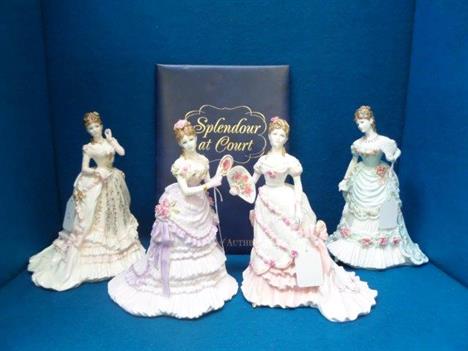We found 129934 price guide item(s) matching your search
There are 129934 lots that match your search criteria. Subscribe now to get instant access to the full price guide service.
Click here to subscribe- List
- Grid
-
129934 item(s)/page
Historical Documents1657 "an act for the setling of the postage of england scotland and ireland at the Parliament at Westminster the 17th Day of September, Anno Domini 1656", printed in London by Henry Hills and John Field. This is the first act of parliament relating to the erecting and setling of one General Post Office for the speedy conveying, carrying and re-carrying of letters by post to and from all places within England, Scotland and Ireland and into several parts beyond the seas. Be it enacted by His Highness the Lord Protector and the Parliament, that from henceforth there be one General Office, to be called, and known by the name of the Post-Office of England: and one officer under the name and stile of Postmaster General of England, and Comptroller of the Post-Office. Also setting out the rates of postage. A very rare and important document which established the Post Office for the carriage of mails. Photo provenance: Geoffrey Owen Lockwood, February 1966 The origins of the Post Office date from 1635 when King Charles I opened the Royal Post to the public. This was conceived as a way of generating extra revenue for a service which was already in operation for the sovereign's mail. However, the civil war between the royalists and the parliamentarians effectively closed the post for the public. It was not until 1652, after the battle of Worcester had ended and Charles II had fled to the continent, that parliament felt able to reopen the post to the general public. This, the first postage act, confirmed the right of the new position of Postmaster General to carry letters, establish rates and supply horses on the post roads. This act also established the Post Office monopoly for the carriage of lettersSubject to 20% VAT on Buyer’s Premium. For more information please view Terms and Conditions for Buyers.
Historical DocumentsKing Charles II1667 (13 June) a royal warrant appointing "Horatio Lord Townshend" to be Colonel of a regiment of foot, consisting of ten companies, each of 100 men, closes with "By His Majesty's Command" and signed "Arlington". Signed by the king at top, "Charles R" and with wax wafer seal impressed with the king's coat of arms. Usual folding creases but fresh and fine. Photo Charles II (29 May 1630 – 6 February 1685). His father, King Charles I, was executed at Whitehall on 30 January 1649, at the climax of the English Civil War. Although the Parliament of Scotland proclaimed Charles II King of Great Britain and Ireland in Edinburgh on 6 February 1649, the English Parliament instead passed a statute that made any such proclamation unlawful. England entered the period known as the English Interregnum or the English Commonwealth, and the country was a de facto republic, led by Oliver Cromwell. Cromwell defeated Charles II at the Battle of Worcester on 3 September 1651, and Charles fled to mainland Europe. Cromwell became virtual dictator of England, Scotland and Ireland, and Charles spent the next nine years in exile in France, the United Provinces and the Spanish Netherlands.A political crisis that followed the death of Cromwell in 1658 resulted in the restoration of the monarchy, and Charles was invited to return to Britain. On 29 May 1660, his 30th birthday, he was received in London to public acclaim. Henry Bennet, 1st Earl of Arlington (1618 – 28 July 1685) was an English statesman.Horatio Townshend, 1st Baron Townshend and 1st Viscount Townshend 14 December 1630 – 10 December 1687), known as Sir Horatio Townshend, 3rd Baronet, of Raynham, from 1648 to 1661, was an English politician who sat in the House of Commons between 1656 and 1660 and was raised to the peerage in 1661.Subject to 20% VAT on Buyer’s Premium. For more information please view Terms and Conditions for Buyers.
Historical Documents1848 (18 June) Way-bill from the Castle Hotel, Conway, to Llanrwst per "Mail" with the name of the coachman (Charles Charlette) with carriage for a box and a very small parcel; with an illustration of a mail coach and four in top left corner, 9 x 7¼ inches; two repairs. Unusual with the mail coach illustration. Also 1849 (12 June) printed way-bill for the coach "L'hirondelle" from the Crown Hotel Worcester to the Lion Hotel Shrewsbury showing royal coat of arms at top with manuscript details of the passengers to Ellesmere (13/-) and Ironbridge (9/-) and other annotation, 7½ x 10 inches; folded. Photo Subject to 20% VAT on Buyer’s Premium. For more information please view Terms and Conditions for Buyers.
-
129934 item(s)/page


























































